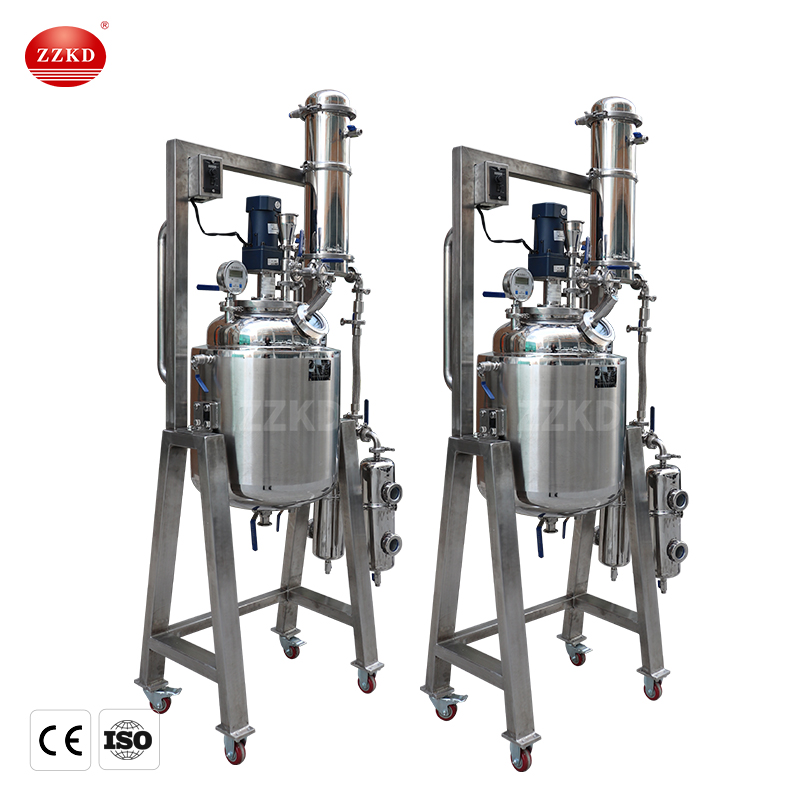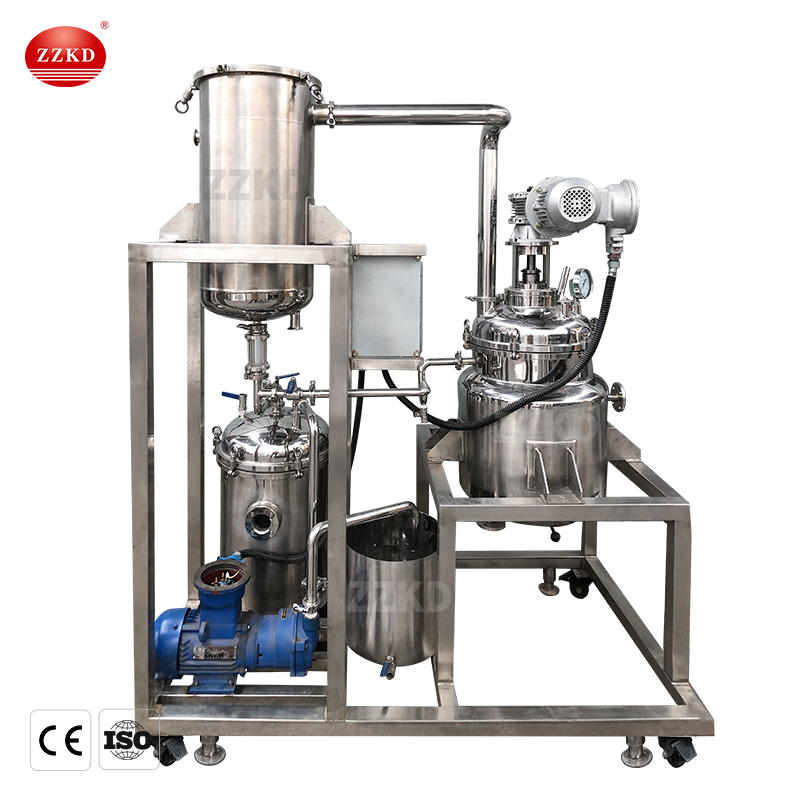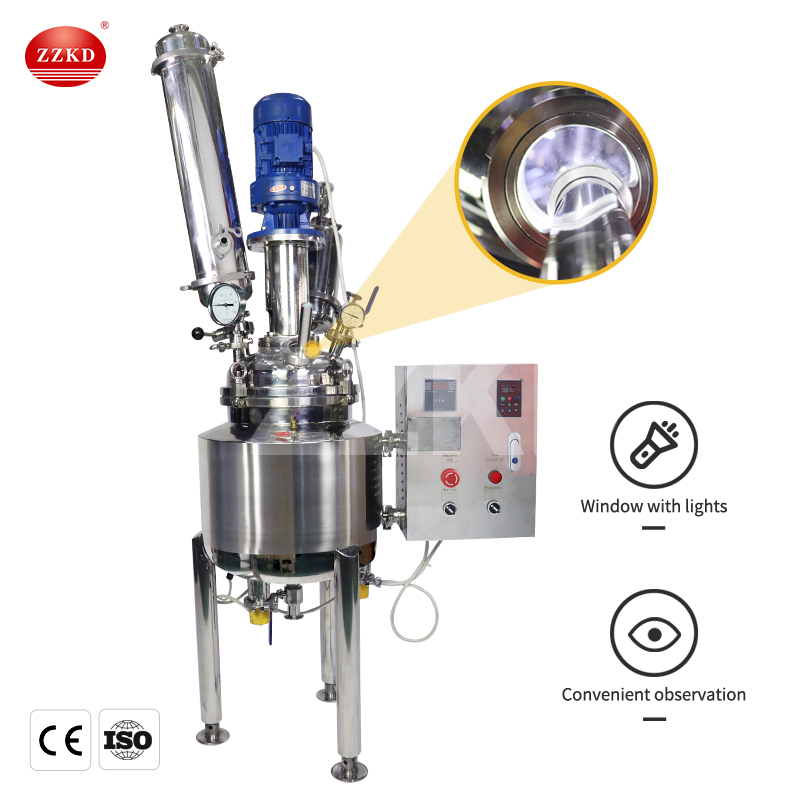Stainless Steel And Glass Lined Reactor
With the continuous improvement of modern industrialization, the application range of reactors is becoming more and more extensive, and the types of reactors have also increased accordingly. We commonly have stainless steel reactors, glass-lined reactors, glass reactors, etc., so what is the difference between different reactors? Today we will explain the difference between stainless steel reaction vessel and glass-lined reactor.
1. Differences in materials:
The glass-lined reactor is made of a glazed surface that burns at high temperature to form a tight glaze on the metal surface. The stainless steel reactor is made of stainless steel.

2. Differences in acid resistance:
The inner body of the glass-lined reactor is glazed, so the acid resistance is stronger than that of the stainless steel reactor. The heat transfer effect of stainless steel reactor is superior to that of glass-lined reactor.
3. Differences in cost:
The price of the glass-lined reactor is relatively cheap. In the same volume, the stainless steel reactor is more expensive than the glass-lined reactor, but the weight is lighter than that of the glass-lined reactor.
4. Differences in pressure resistance:
The working pressure that the glass-lined reactor can withstand is not too high, relatively speaking, the stainless steel reactor can withstand high pressure. Glass-lined reactors can be used for acidic substances with low working pressures, while stainless steel reactors can be used for working pressures.

5. Differences in temperature:
When the stainless steel reaction kettle is heated by jacket, the temperature of the material can reach 280 degrees, and when it is heated by circulating heating or zero-distance electric heating. The inside of the kettle can reach 400 degrees. The material temperature of the glass-lined reactor should be controlled below 200 degrees to avoid melting of the enamel layer due to excessive temperature.
6. Use the difference in pressure:
The large-volume stainless steel reaction kettle adopts a closed structure, and the kettle body is welded to ensure that there will be no leakage. A round hole is opened in the center of the upper head to facilitate the passage of the main shaft. A packing seal, a mechanical seal or a magnetic seal can be arranged between the main shaft and the round hole. Mechanical seals can hold pressures of tens of kilograms, while magnetic seals can hold pressures of hundreds of kilograms. That is to say, the stainless steel reaction kettle can be made to withstand pressures of tens or even hundreds of kilograms. The glass-lined reactor can not use a closed structure, but an open structure. The glass-lined reactor is connected between the head and the kettle body by flanges and bolts, and a layer of PTFE pad is added in the middle to prevent material leakage. Since the enamel layer sintered on the inner surface of the glass-lined reaction kettle is very smooth and easily damaged, the flange between the upper head and the kettle body cannot be screwed too tightly, which results in low pressure resistance in the kettle. The pressure in the glass-lined reactor with mechanical seal should not exceed 4 kg.
7. Differences in corrosion resistance:
The barrel and agitator in the stainless steel reaction kettle are made of stainless steel, and the corrosion resistance is determined according to the selected stainless steel grade. General corrosive materials, such as food, vinegar, etc., will not corrode stainless steel. If it is highly corrosive materials such as 20% sulfuric acid and nitric acid, stainless steel will also be corroded. In the glass-lined reactor, a layer of enamel layer is sintered on the surface of the contact material. This layer of enamel layer will not chemically react with any material, thereby protecting the carbon steel structure inside from corrosion. Therefore, the corrosion resistance of the glass-lined reactor is higher than that of stainless steel. Reactor height.

8. Differences in structure;
The volume of the stainless steel reaction kettle is relatively large, and the closed structure is conditionally adopted, and the upper head and the cylinder are welded together. The stainless steel agitator consists of a main shaft and a blade, which are connected by bolts, and can be disassembled and re-installed for maintenance when necessary. The upper head and the barrel of the glass-lined reactor are connected by flanges, and there is a tetrafluoro gasket between the upper flange and the lower flange for sealing. The stirrer is welded with carbon steel pipe fittings and then fired with a layer of enamel, which is not removable.
The above is the difference between the stainless steel reactor and the enamel reactor that we explained to you. Both have their own characteristics and advantages. Customers need to choose the appropriate reactor equipment according to the actual application. As a professional manufacturer of reactors, Zhengzhou Keda can provide customers with customized production of stainless steel reactors, glass-lined reactors, glass reactors and other products. Welcome to contact us: [email protected]


